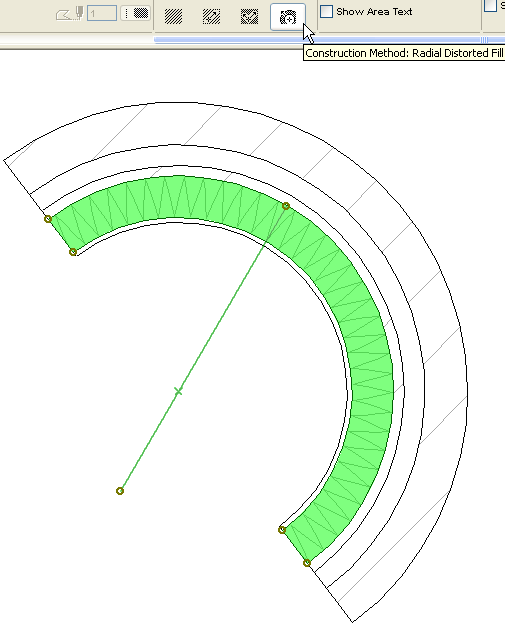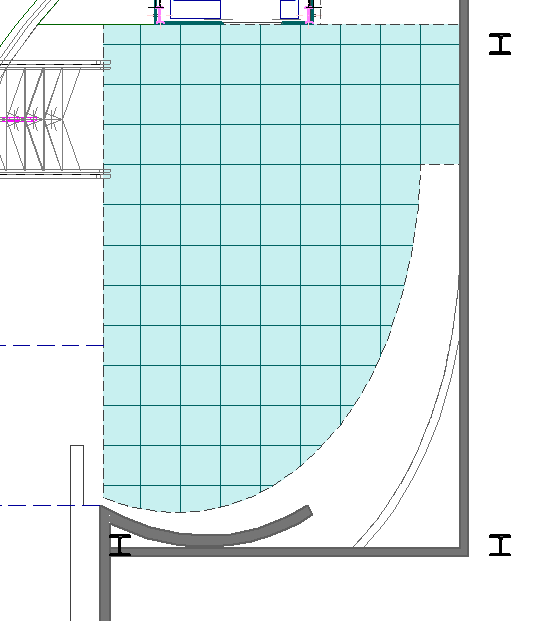
Radial Distorted Fill (Symbol Fills only)
If you choose Link to Project Origin, the orientation of the hatching will always be drawn orthogonally from the Project Origin, independently of the transformations made on the element.

Use the Link to Fill Origin to fine-tune the angle of the fill pattern. If you choose this option, the fill pattern starts at the origin of the fill. In this case, a single handle appears on the placed fill to define and show a visual feedback of the orientation of the fill.
Note: Fill handles are visible only if you enable Fill Handles (Drafting and Editing Aids) in View > On-Screen View Options.
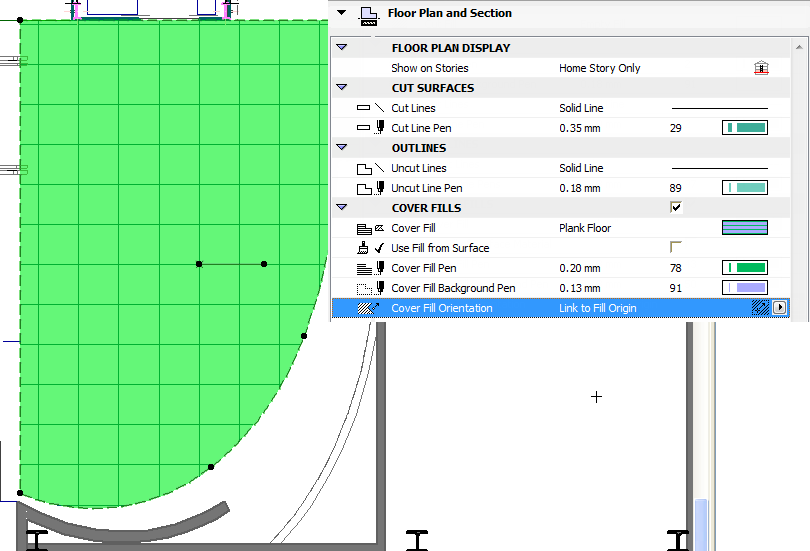
Now drag the Fill Handle to realign the fill pattern as needed. Make sure the Move Sub-Element icon is active on the pet palette.
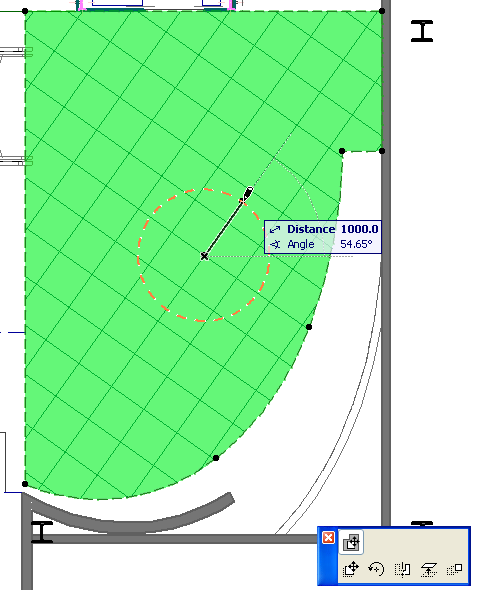
When creating a new fill using the Link to Fill Origin option, first place the fill polygon using the Fill Tool.
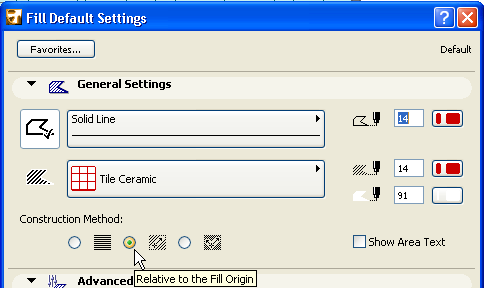
The cursor changes to the shape of a fill handle arrow:
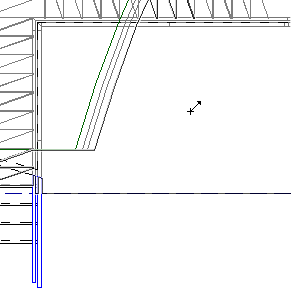
Click twice to define the origin and direction of the fill pattern. Your first click will determine the Fill’s origin and the second one the endpoint of the orientation vector.
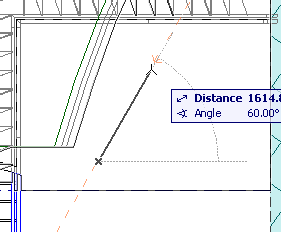
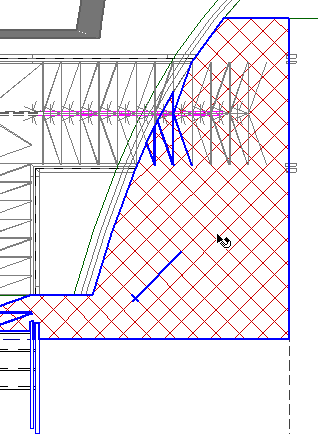
Note that the handle does not necessarily have to be located inside the Fill. You can drag the handle out of the body of the fill after placing it.
A third Construction Method for Fill Orientation (available for cover fills of some elements) allows you to Use Distorted Fills. This means that instead of a single handle showing the orientation vector, two handles will appear at the origin of the fill and you will be able to manipulate the hatching pattern by modifying the length of either handle and the angle closed by the two handles. Note that (if Guide Lines are active) a Guide Circle appears when you take hold of either handle, so that if you start distorting the fill but then decide to return to its original orientation, you can pull the handle back to its original location on the Guide Circle.
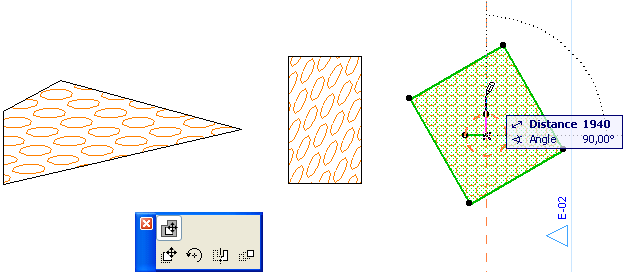

Cover fills of Roofs can also be represented according to their real geometric positions with this feature. While you cannot manually distort the pattern of a Roof’s cover fill, you can set the Distort with Slope control in the Roof Settings dialog box to automatically distort its cover fill to follow its slope.
To do this, select the roof and open its Roof Settings - Floor Plan and Section Panel. Make sure that the Cover Fills checkbox is active, and enable both the Align with Slope and Distort with Slope controls.
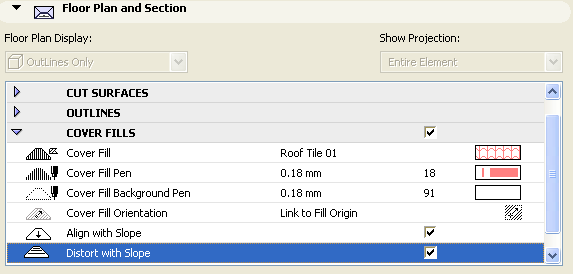
Symbol Fills as Skins of Composite Elements: Fit to Skin
If a composite element includes a symbol fill as part of the Building Material, you can adjust that fill to “fit to skin”, so that the fill pattern is adjusted to the shape of the skin. This is especially useful when modeling soft insulation, plywood, metal decking or any directional fill.
To do this, use the controls in the Building Materials dialog box (Options > Element Attributes > Building Materials.)
1.Go to the Fill Orientation control in the dialog box.
The symbol fill pattern is now adjusted to fit the contour of the element.

Radial Distorted Fill (Symbol Fills only)
The Radial Distorted Fill construction method lets you graphically adjust the vector’s radial distortion. This is available only for a selected symbol fill and only if:
•the symbol fill was used as a skin of a composite or complex structure; and
•the skin’s Fill Orientation was defined as Fit to Skin in its Building Material; and
•you have selected this symbol fill after exploding a curved composite/complex wall.
See Explode into Current View.
Note: The use of many radial distorted fills in your project may decrease project performance.
Here is a curved composite wall with a symbol fill (orientation: Fit to Skin) as one of the skins, after the composite wall has been exploded. Each fill can now be selected separately. The symbol fill displays a fill handle and the Distorted Radial Fill construction method is available. Adjust the fill handle to adjust the fill’s distortion or the pattern’s origin as needed.
